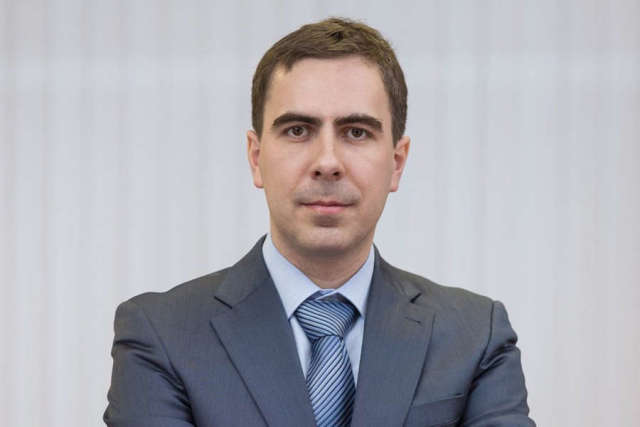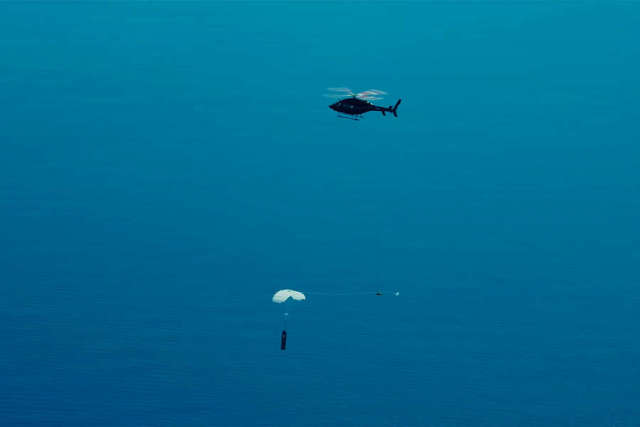Space expert Pushkin told why to save rocket stages by helicopter
Should the first-ever return of a space rocket to earth using a parachute and a helicopter be considered a breakthrough, is it better to land a rocket on its feet, as Elon Musk does, and does helicopter pick-up have a future in Russian cosmonautics, "Gazeta.Ru" was told by Pavel Pushkin, an independent space expert, former director of the private space company KosmoKurs.
- On the eve of the private company Rocket Lab entrepreneur Peter Beck for the first time managed to return with the help of a helicopter and a parachute the stage of a space rocket at launch for reuse. After SpaceX, they became the second company to implement their own way of saving the stage. Is this an important event for cosmonautics?
- In general, the idea of helicopter pick-up of a rocket stage is not new, it has been put forward for a long time, including in Russia. This is a fairly well-developed technology related to space. Similarly, descent vehicles, capsules with photographic film were returned from space.

Pavel Pushkin
Image source: Kosmokurs
Mostly Americans were engaged in such experiments. The problem they had was that their territory was stretched in the other direction from the launches, and it was easier for them to pick up some objects. There were even experiments with picking up a person. There is such an episode in one of the James Bond films, and this is not a cinematic fairy tale - when a person jumps with a parachute and is picked up by a plane or helicopter. This system has been worked out for a lot of things.
- Did we also use a similar system in our country?
- Yes, as far as I know, such a system was worked out on our helicopters in the 70s and 80s to rescue a military special facility. Many successful air pickups have been carried out and high reliability has been demonstrated.
- But during the space launch, this method of returning the stage was used for the first time ...
- Yes, we have never used it for space. The biggest problem for the pick-up system is the weight of what you want to pick up. It is determined by the helicopter's payload capacity.
In Russia, my colleagues were working on the issue of helicopter pick-up of universal missile modules UTM-1 of the Angara rocket. It weighs about ten tons.
- Just right for the world's most lifting helicopter Mi-26?
- Yes, Mi-26 raises it. The Mi-26 with a payload capacity of 20 tons in flight can pick up a maximum mass of up to 15 tons. There is no problem with that.
- And what is there?
- There may be problems with the size of the parachute and the helicopter itself. If the object is small, a small parachute, a hook, everything is fine. But for a large object, large parachutes are needed, helicopters are starting to blow them away. That is, when you go from small to big, your problems begin. What Rocket Lab is doing now is probably correct, since the size of their stage allows you to implement the pick-up in the simplest way. That is, they do not need to make any super-complicated restraints - a parachute is flying, they picked it up with a hook and that's it. At the same time, when picking up, there are no overloads and jerks, and it solves the problem of the last stage of using the rocket. For Space X, this is the landing of the first stage on the legs, and for Rocket Lab, it is a pick-up.
Do not forget that picking up a step by helicopter is one thing, a completely different problem is to lay it carefully. In principle, in Russia, in the USA, I think too, helicopters are able to carefully stack cargo, there is a lot of experience in the construction of masts and other structures.
- After all, in both cases, the step for a soft landing should carry an extra load ...
- Yes, in the case of pick-up, you save on legs and fuel for the braking impulse, but you need to shove a parachute into the step, and you need a helicopter that needs to be serviced… On the fingers, these are roughly similar systems. Picking up a rocket by helicopter is even easier than landing on legs, there is no need to work out the dynamics of flight.
- Can the idea of picking up find application in Russian missiles?
- It's hard to say, we have our own questions with reusability, how promising it is in our conditions. And if we are talking about heavy, that is, state-owned missiles, then there is not enough payload capacity. Yes, the UTM "Angara" can be picked up, but at the same time, if the "Angara" is made reusable, its payload mass will seriously decrease and such a rocket will not be needed. But if we talk about ultralight rockets, then yes, probably, because of the high competence of the team, it will be cheaper for someone to pick up. And it will be cheaper for someone to sit on their legs. And I know the collectives in our country who are trying to plant on legs.
- Landing like Max on his legs and helicopter pick-up in the air is not the only way to save the first. How promising is the use of a winged stage that lands on the airfield in an airplane way?
- Yes, this method has been proposed several times. The first time was back in the USSR, when they were going to save the side stages of the Energia rocket in this way. Initially, the step was proposed to be returned not to the legs, but sideways to the landing supports with the use of powder engines and parachutes. A classic parachute-jet landing, as for the Soyuz spacecraft. This was implemented in the form of mockups, we saw these elements on the "sidewalls" of the rocket, but during throwing tests, the rocket block broke in half.
The party and the government began to urgently look for a replacement, including considering picking up, though with two helicopters at the same time. It turned out that it was difficult, and so the idea came up to make a rocket block with a wing that moved apart like scissors. The project was called GC-175. Calculations were made, purges were made, but at this stage everyone already understood that the rocket would no longer fly, as well as the Buran.
- And in the two thousandth such ideas were offered?
- Yes, people who had previously been involved in this project, mainly the military, came to the Khrunichev Center and proposed such a scheme for the Angara steps. So the Baikal project was born, people from the Lightning who participated in the development of the Burana glider were caught up there, who decided that this project would be implemented. It was around 2001. All this was worked out on the finished "Hangar", it turned out that the system does not give anything, and somewhere in 2002 the project was curtailed, although a lot of money was poured into it. Then, as an alternative to him, the project of picking up the side blocks by helicopter was worked out.
Then the project participants concluded that the cruise stages on the finished rocket cannot be used, it is necessary to increase the dimension of the rocket, make it methane, and calculations on the fingers showed that everything will work out. Vladimir Nesterov, who in his youth was related to the Energia project, came to Khrunichev as the head, and again supported the wing project.
This is how the MRCS project was born - a "reusable rocket and space system", based on Baikal, with wings, but of a larger dimension. But again, at the paper stage, it was shown that there are a lot of technical difficulties, and the economic characteristics even on paper turned out to be controversial.
Now in TsNIIMash, a flight demonstrator "Wing-SV" is being made at the base.
But there are problems with this system as well.
- Is there a problem with the hinge on which the wing should rotate?
- This is not the main problem. The main thing is the return.
The winged block seems to be beautiful, interesting. But it is very expensive to develop and work out. To sit on the legs, it is necessary to develop simple systems, drives, and add fuel. To pick up, you need a parachute, a helicopter, small improvements. And with the wing, it is necessary to completely change the stage body, everything needs to be redone, add a bunch of expensive aviation systems, but most importantly, this cannot be worked out during regular rocket flights, like SpaceX and Rocket Lab. The system is very interesting in terms of the development of funds, in a good way, there are a lot of very interesting tasks, and people are drawn to this. But there is a reason that two other systems have been implemented so far, and the third one is only shown at exhibitions. And for some reason, only the military, and ours, and the whole world are still interested in it, apparently since the time of the "Buran".
In general, landing with the help of helicopter pick-up is not a bad idea, although I would not say that it is revolutionary. It is no worse than landing on the legs.
Pavel Kotlyar

